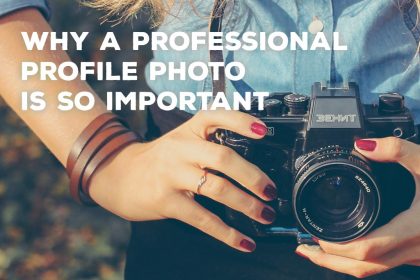How to take brilliant lifestyle photos for your website or blog
Want to take better photographs for your website or blog but don’t have the skills? Learn how to take beautiful lifestyle photos with our easy professional tips and tricks.
Do you find yourself looking at other blogs and websites and wondering how they got such amazing pictures? The answer is simple; they just know some of the basic rules of photography.
And to help you achieve the same stunning results, mum and professional photographer Olga Hoffman is sharing her tips to help you improve your photography skills.
It’s all about your camera, light and managing people
I am a mum and a professional photographer (I’ve worked for everyone from Elle and Manolo Blahnik, to Sainsbury’s and Good Housekeeping). I also teach how to take great pictures of children and family through my online iKids Photo Course.
Getting fantastic photographs is all about understanding how your camera works, how to use light, and how to manage the people who you photograph – especially children, who can be very challenging to work with.
In this second article in my three-part series for Talented Ladies Club, I’ll show you how to create stunning lifestyle pictures for your website or blog. (If you want to learn easy tricks to help you look good in photos every time, read my first article.)
How to prepare your camera
Photography manufacturers often promise you: “Just press the button, and the camera will take a perfect picture!” But the truth is that YOU take the picture, not the camera. And to take professional-looking photos, you need to know your camera properly.
Each camera is different, so it is best to look at the camera’s instruction manual to understand its particular features. However, there are some basic rules which can be applied to any photography equipment:
- Hold your camera on your model’s eye level, or slightly above when you take headshots. When you photograph children go low down to their eye level.
- Find out how autofocus works on your camera and always focus on the main subject of your picture.
- Use the right mode to photograph a particular scene. For example, sport mode, landscape mode or portrait mode. (Not all cameras have all those modes, or they may be named differently.)
- Use a tripod when it is getting darker to avoid blurry images (You can also buy tripods for smartphone cameras.)
- Portraits are usually taken with a blurry background. To achieve this, change your camera to portrait mode and make sure that your model is positioned far away from the background. At the same time you need to frame the pictures very tight (so the model almost fills the screen).
- Think about composition when you are taking a photo, and get as close as possible to your photograph’s person or subject.
How to get your lighting right
The word ‘photography’ came from the Greek language and means drawing with light. And indeed, the picture you create with your camera happens thanks to light.
You can create different moods with light and pass different messages to your customers. For example, bright light creates an upbeat mood, while dark light can give a sense of drama. So before you plan a photo shoot, choose the right weather, location and time of day.
Using overcast weather
The most natural light you will get is during overcast weather. In these conditions you have the biggest chance that the pictures will come out nicely. It is a good light to photograph products and even portraits because skin will look smooth and soft, without any harsh shadows. It is also wonderful light to take pictures of babies due to its softness.
Using sunny weather
When you take photos on a sunny day, ask your model to stand under a tree (or anything that will give some shade). If you use a tree you can get a beautiful sun reflection, but be careful because your camera might not be able to balance highlights and shadows and the final effect may look too dark or too bright. The safest place to photograph is under a gazebo or something that will give a consistent shadow.
Using morning or evening light
Early morning or evening, when the sun is low in the sky can ask be a good time of day to take photos. Around an hour before sunset you can get very beautiful, warm light. Position your models with the sun from the left or right to pick out highlights in their hair.
Using indoor lighting
You will get more dramatic and darker lighting when you photograph indoors in a darker room. However, you still need to position your model as close as possible to a window. Make sure that your flash is turned off. House lamps are not recommended because they will give an orange tint.
Working with models
When you take pictures of adults it is relatively easy because you can ask them pose how you want. It is trickier with children. However, each group brings different challenges.
Adults tend to freeze when you take their pictures, so your job is to make them feel more relaxed. You can ask then about their day, but focus on positive things to get a nice facial expression. Don’t ask them to say ‘cheese’ as this will only get fake smiles. You can read more tips on how to pose and look good in photos here.
Photographing babies
Working with babies, toddlers and school age children requires completely different skills. Most of the time, babies stay still, but they also limit the angle of your pictures.
The best place to photograph babies is in a very bright room using soft light like overcast weather. Try to take pictures of newborns from different angles and go down to their eye level.
Photographing toddlers
Toddlers move a lot, and most of the time you find yourself running after them with a camera; it is very difficult to get them to stay still. When they are a bit older you can play a game with them – ask them to run towards you, do something silly that will make them laugh. This way you can grab their attention and get natural facial expressions.
The other approach is more photojournalistic. You follow them with a camera and wait to capture a particular moment. If you want to keep more in control, for example if you want to capture them with a particular toy, put them in the place where you want to take a picture and start to photograph them.
You’ll need to take a lot of pictures to get a good one. Always photograph them from their eye level – if you photograph them from above, their head will look bigger compared to the rest of their body.
Photographing older children
Older children tend to shy away from cameras. They hate any family portrait to be taken, especially when they are being asked to stay still and smile. They are also more self-conscious and some are very critical about their appearance.
The best approach is to make them feel more confident. It’s also good to explain why you are taking photos of them, how important it is for you, and how much you appreciate their time.
If they are your own children you can remind them of happy times you spent together, or promise them something for their time. And remember, they don’t need always to look at the camera; you can get a great shot when they look in a different direction.
In part three of my three-part guide I’ll show you some simple technical tricks to prepare your photos so they’re perfectly ready for publishing.
If you found these tips helpful and would like more advice on taking fantastic photos, download the free ebook 7 photography tips to taking amazing pictures of children.










